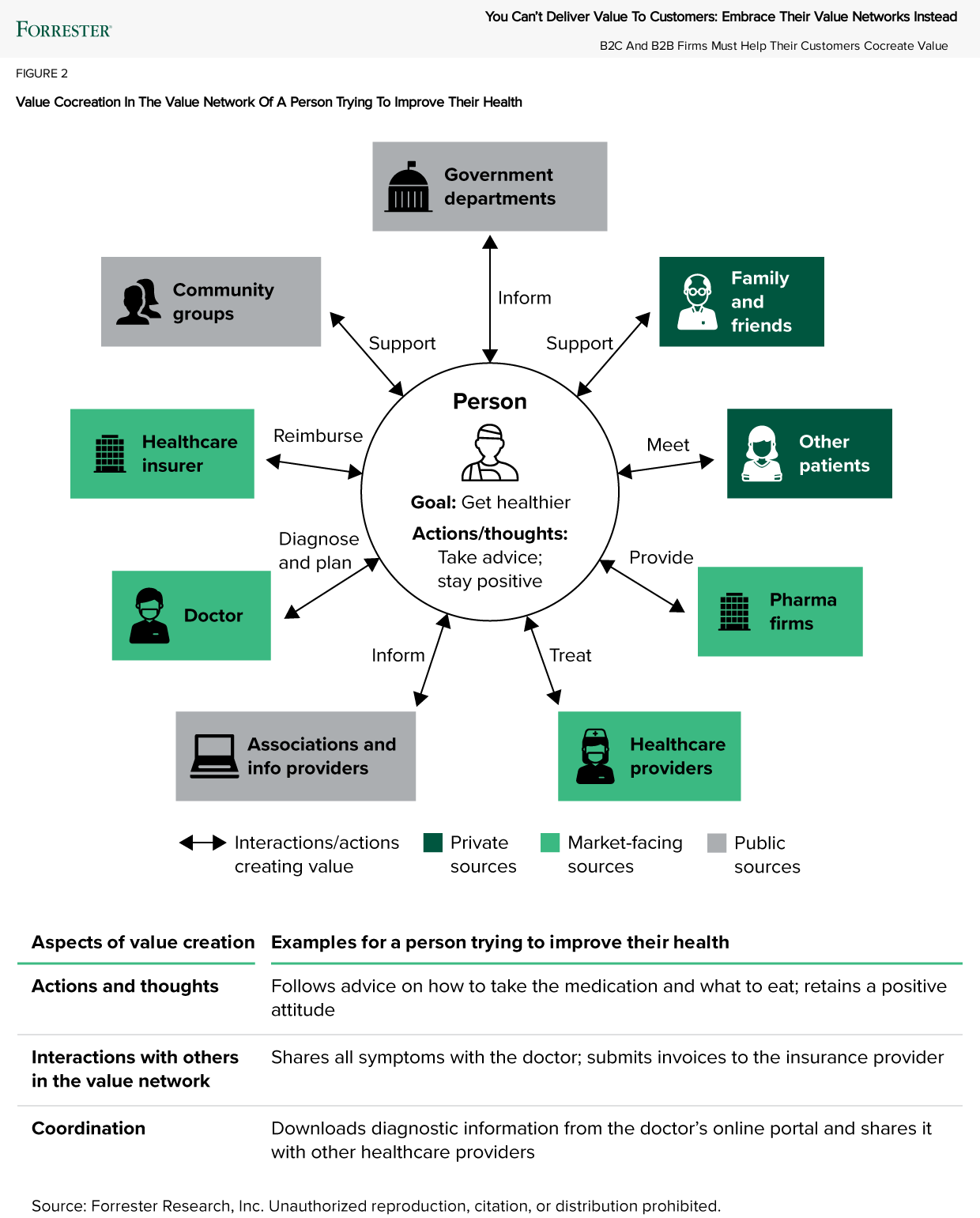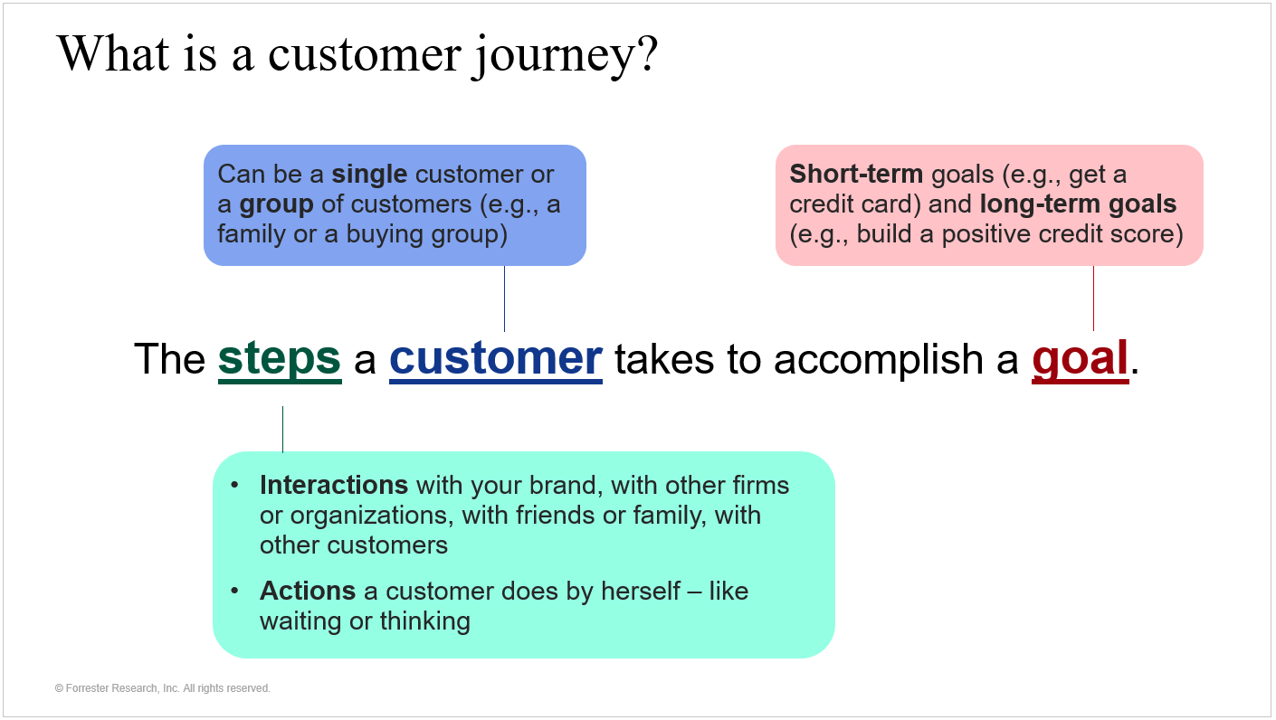The Customer Is “Neo,” Not You
You need to deliver value to customers. Right? Wrong!
Believing that your firm “delivers” value makes you the Hero.
This is just like Neo in “The Matrix,” which tells a classic hero story of Thomas “Neo” Anderson, who is on a quest to free humanity from the Matrix. Trinity is his co-star. Morpheus, Agent Smith, and others are supporting actors. And there are “extras” like the SWAT team that kills Mouse in the hotel. The focus is Neo’s heroic quest. Thoughts and actions of people who aren’t Neo (“The One”) only matter if they advance that quest. If you believe that your organization delivers value, you think of your organization as Neo and of customers as an extra.
Your customer is the hero.
But your customer is Neo, AKA the hero. He or she is on a heroic quest to achieve a goal. She has co-stars, supporting actors, and extras — the various companies, associations, friends, and family she interacts with in pursuit of her goal. Your company? It’s just a part of the story. What kind of part — extra, a supporting actor, or even a co-star — is up to you.
- Why does this hero belief matter? “Language doesn’t just name our society; it shapes it,” as disability activist Sinéad Burke puts it. If your organization thinks it’s the hero, it believes that there is inherent value in its products and services. And it forces customers to adjust to how it works. For example, I recently flew from Zurich to Salt Lake City. The airline (one that I rarely use) forced me to download its app to get the boarding pass — for a ticket I already paid for!
- Why should you care? The hero syndrome makes it harder for your organization to become customer-obsessed and to reap the benefits of customer obsession: higher and more sustainable growth. Especially in difficult economic times, it’s worth not backing off customer obsession.
Value Is Co-Created, Not “Delivered”
There are three reasons why you cannot “deliver” value. (I’ll use the example of you trying to recover from being sick, but this applies to any kind of customer — businesses or consumers — and it applies across industries).
Value is:
- A contextual perception “in use” … not inherent. Any medication you take doesn’t inherently deliver value; you get value when it’s the right medication and when you take it at the right time in the correct dosage.
Your company’s products and services also don’t have inherent value; your customers get value when those products and services help them achieve a goal. - Co-created in value networks … not just between a firm and a customer. A doctor alone cannot make you healthy. It takes insurance companies, pharmacies, other healthcare providers, pharma firms, friends and family, support groups, diagnostic labs, etc. That’s your value network.
Your firm’s customers also interact with an array of people and organizations as they pursue their goal. That’s the customer value network. Value creation happens as customers interact in their value network. Your company is only one part of the value creation in that value network. - Shaped by customers … not delivered to passive customers. Your actions and thoughts as a patient matter: If you hide symptoms or forget to take your medication, you won’t get better. And you coordinate across your value network — you may download a test result from your doctor to share it with another healthcare provider.
The same is true for your customers.
Want To Be More Than An “Extra”? Earn Your Place In Customers’ Value Networks
You need to earn your way to being more than a replaceable “extra” in your customer’s story. How? Help customers achieve their goals! To do that:
- Redefine journeys. A journey is not the sum of a customer’s interactions with you! It’s the steps a customer takes to accomplish a goal. That sounds basic, but check out your own journey maps and see how many don’t meet that definition.

- Map value networks. The value network around customer journeys tells you who is involved besides you. Like in the healthcare example above, consider all people and organizations that a customer interacts with in pursuit of their goal.
- Validate value priorities. Value is not only value for money. It has four dimensions: economic, functional, experiential, and symbolic. To identify which value drivers across dimensions matter to customers, do your own research, like payment provider Square did. Square found that many of its small-business-owner customers weren’t motivated by growth (economic value); instead, they saw their business as a lifestyle and a way to bond with the community (symbolic value).
- Act in context. Context determines whether a product or service helps customers get value. Anticipate and act within customers’ context through manual rules or through technologies such as real-time interaction management or journey orchestration. For example, TD Bank provides its clients with cash management features, including an AI tool that predicts customers’ balances and sends prompts to avoid overdraft charges.
Want To Become A “Supporting Actor” Or “Co-Star”? Facilitate Value Creation In Customers’ Value Networks
Should you try to be a supporting actor in the customer’s story? Or even a co-star? Being a supporting actor or co-star means that you take a more active role and help customers coordinate across their value network. For example, Singapore’s DBS Bank facilitates value creation around the journey of buying or selling a car. The DBS-provided interface gives customers access to two car marketplaces, coordinating test drives, document exchanges, financing, and more.
How can you facilitate value creation?
- Find struggles. Identify journeys where customers are struggling to navigate the value network. In the DBS example, that’s buying a car. Once you’ve earned a place in your customers’ value network and gained their trust, they are more likely to share insights into their needs, helping you identify where to help them coordinate their value network.
- Plan value facilitation. Find opportunities where you can make it easier for customers to navigate their value network. Your focus depends on how much customers permit you to coordinate for them (based on their trust) and your business capabilities.
- Shape your role in ecosystems and platforms. Will you build a platform or ecosystem? Or will you participate? If you are building platforms and ecosystems, do so around customer needs, not around you. DBS didn’t partner with these car marketplaces because they seemed like great adjacent companies to work with; it created this technology, people, and process integration because it would help customers achieve a goal. If you will participate in platforms or ecosystems, choose those that are built around shared customers’ needs.
Always remember: The customer is Neo (“The One”), not you!
Check out my new report, You Can’t Deliver Value To Customers: Embrace Their Value Networks Instead (Forrester access required), for more details, examples, and implications.
